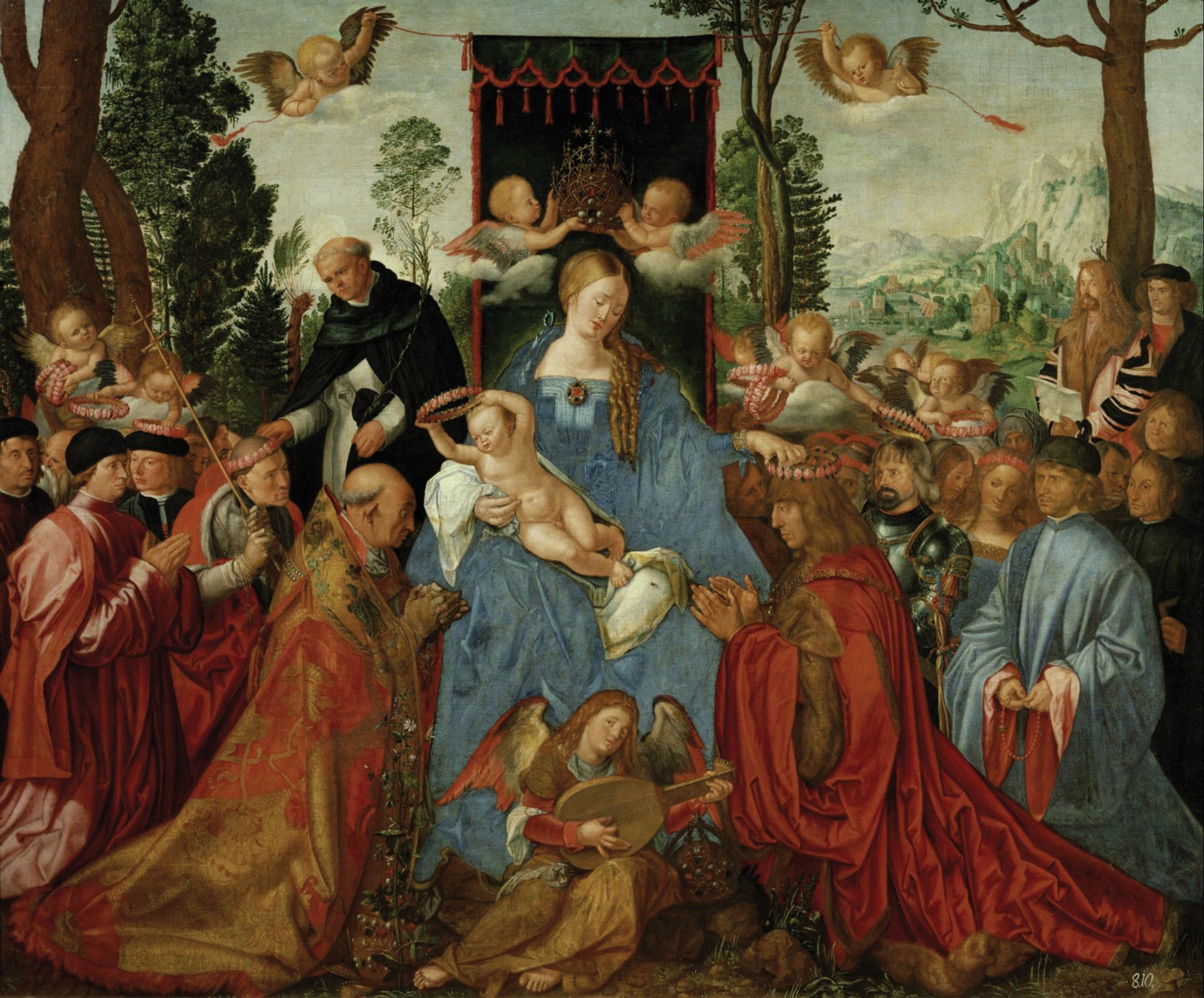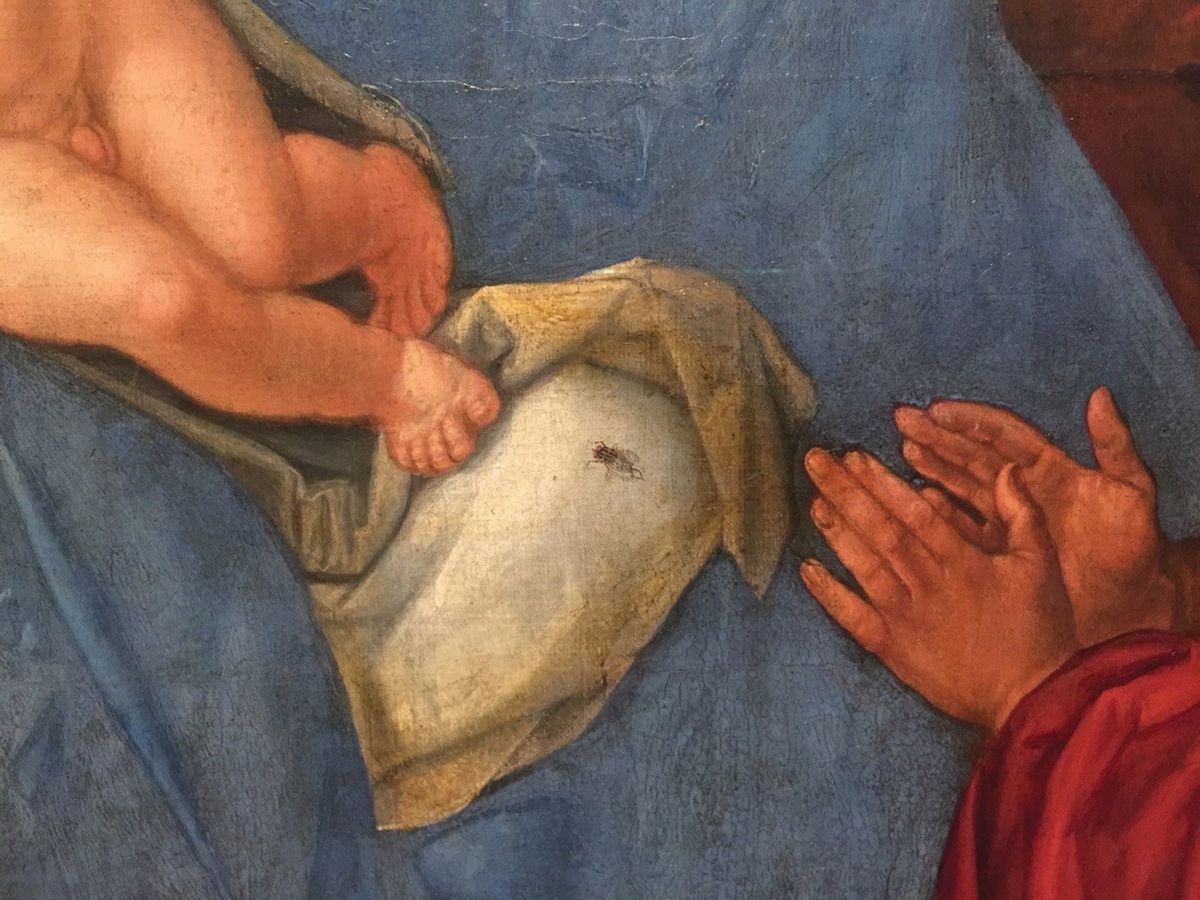What may come as a surprise in London’s current Dürer exhibition at the National Gallery is finding a fly depicted in an early copy of his altarpiece The Feast of the Rose Garlands. Most visitors fail to notice the insect, but once spotted, it is impossible to ignore.
The fly is positioned almost in the centre of the composition, sitting on a cloth on the Virgin’s lap, just between the Christ Child and the Holy Roman Emperor. Look more closely, and it appears life-size. The people in the painting are roughly half-size, so Dürer depicted the fly as if it is on the surface of the painting.

Once seen, never forgotten: the fly on the Virgin’s lap in The Feast of the Rose Garlands Kunsthistorisches Museum, Vienna
The copy, included in Dürer’s Journeys: Travels of a Renaissance Artist (until 27 February), is on loan from Vienna’s Kunsthistorisches Museum. Dürer’s original (which is not in the exhibition) dates from 1506 and was painted during the artist’s visit to Venice. The altarpiece may have been damaged when it was taken over the Alps to Prague a century later or during the Thirty Years War, but at some point it suffered severe paint losses. Now at Prague’s Národni Galerie, it has been comprehensively restored several times since the 17th century. The fly has long gone—either because it flaked off or because restorers believed it was inappropriate or a later addition.
But it is virtually certain that Dürer did include the insect. A poem written a year after the completion of the painting names him as the artist of “the daring fly”. Olga Kotková, the Národni Galerie’s curator of paintings, is convinced that the fly “was on the original”. The copy of the altarpiece, which retains the fly, dates from around 1600 and was painted beside the original.
It might seem sacrilegious for a fly to be resting almost equidistant between the feet of the Christ Child and the praying hands of the emperor. So why is it there?
Susan Foister, the curator of the National Gallery’s exhibition, suggests two possible explanations: “as a symbol of mortality or evil” or “to draw attention to the artist’s skill”.
Considering Dürer’s unquestionable talent and immense self-confidence, it could well be an advertisement for his skilful handling of the brush. But on a church altar one could only see the fly from close up, so it would not be obvious to most worshippers.
Dürer’s insect is deliberately inserted between Christ and the emperor. As a symbol of mortality, it might therefore be a reference to the Christ Child’s eventual crucifixion. But the fact that flies are unpleasant creatures and can be associated with evil makes this explanation problematic. Perhaps the idea is that Christ is about to squash the fly with his foot, defeating evil. More than five centuries later, Dürer’s realistic fly remains a puzzle.


